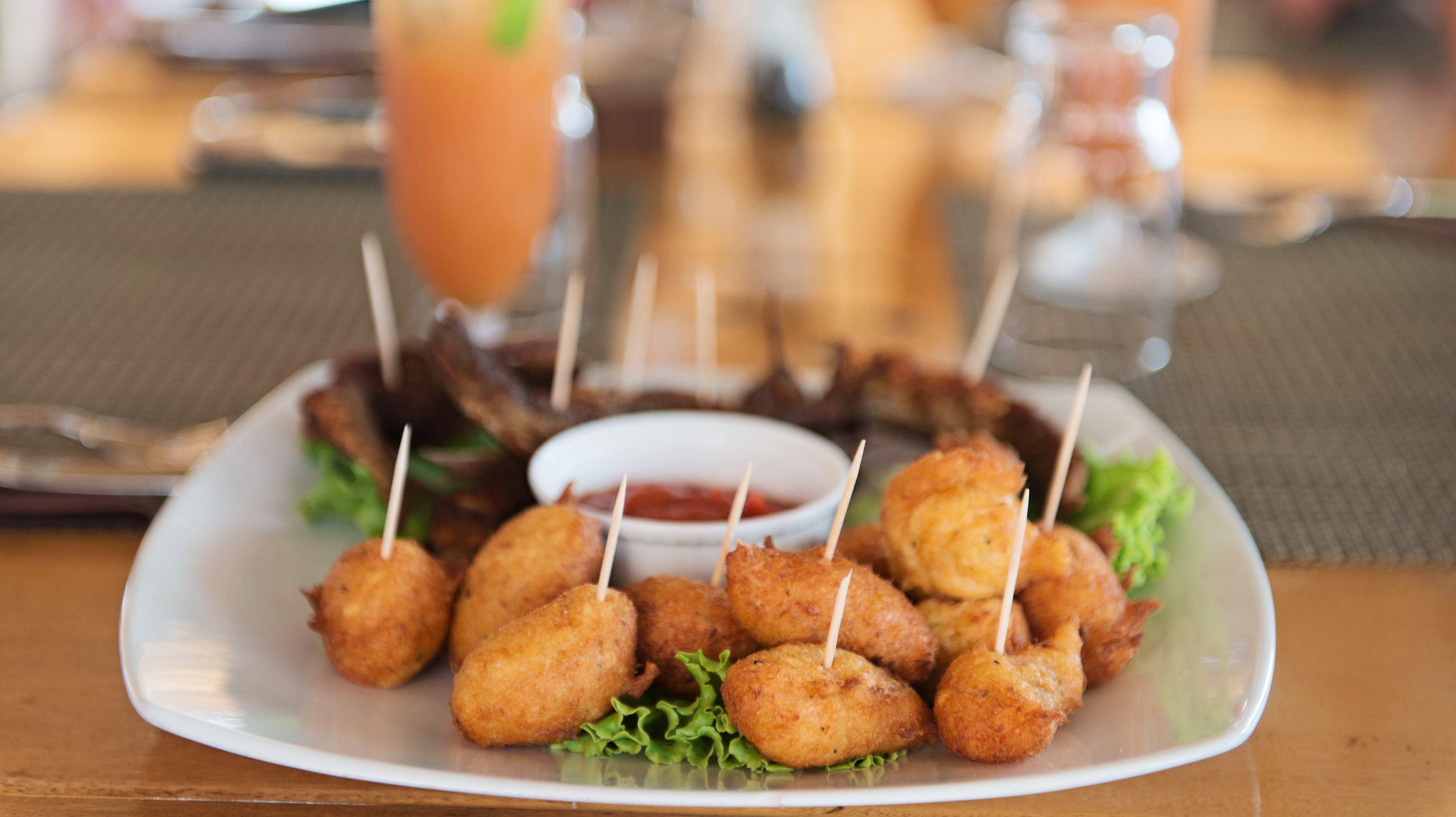How A Simple Fritter Defines The Island Of Martinique
This beloved dish can be found in nearly every kitchen and restaurant on the Caribbean island.
It seems like a tired cliche to say it, but the southern Caribbean island of Martinique is really, really beautiful. The stereotype of all islands is that they're beautiful, of course, but Martinique, with emerald mountains framing turquoise water and flowers blooming everywhere you look, might be the whole reason for that stereotype. The Arawak people, the indigenous inhabitants of the region, call the island Madinina, or island of flowers—and while the abundant natural beauty could easily distract travelers from the many cultural attractions, I was determined to experience both.
I roamed through Balata Botanical Gardens, surrounded by rainforest and filled with some of Martinique's 100 varieties of orchids. I climbed up the 17th-century Fort Louis, which towers 200 feet over the capital of Fort de France and supplies some of the best views of the island. I lounged on the pearly sands of Les Salines and on the black sands of Anse Ce'ron, with angelfish and sea turtles swimming nearby. And while I explored the landscape, I made sure to sample Martinique's famous culinary offerings.
Food is a massive part of Martinican culture, and there are few places you can go on the island without being exposed to the sophisticated cuisine. On the beach, I filled up on delicately grilled sea bream (dorade grilée) and fricassée de chatrou, a flavorful octopus stew with tomatoes and spices. In Martinque, a beach bar does not serve up the hot dogs, burgers, and tacos that you would expect in the US. Food is taken seriously wherever it's served. I don't think I ever saw a basic burger listed on any menu.
I chased each meals with the requisite ti' punch, a custom blend of cane syrup, lemon, and white rhum agricole, which is made from sugarcane that's filtered, fermented, distilled, and aged up to three years. Martinique's Rhum Agricole has Protected Designation of Origin status and tastes smoother and more complex than typical molasses-and-water rum.
Martinique hosts literally hundreds of restaurants, and I must have eaten my way through half of them. I sampled the rich, hearty colombo de poulet, a satisfying dish of chicken, potatoes, carrots, and Martinique's signature spice blend of turmeric, coriander, fenugreek, mustard seeds, cumin, garlic, and pepper. I savored the mouthwatering fe'roce d'avocat, a spicy avocado salad. From one dish to the next, I was enthralled by the variety and quality of the food, well-prepared and delicious whether it came from a street stand or a high-end restaurant.
But there was one hallmark of every dining establishment I visited in Martinique: The linen-clad tables in Fort de-France and the waterside beach shacks alike all featured accras de morue. These fried salted cod fritters are seasoned to perfection and typically served with toothpicks to easily pop them into your mouth. Every day, alongside every meal, I enjoyed a plate of crispy accras. In my mind, these tasty morsels became as much a part of the Martinique experience as the stunning landscape.
A creole favorite, accras are served for breakfast, appetizers, and lunch when accompanied by a salad. The history traces back to West Africa, where accras are traditionally made with black-eyed peas. The Creole version was adapted to include the locally plentiful salted cod. Although these golden lumps of goodness are simple and light, they pack a lot of flavor and satisfaction in a small bite—much like the 50-mile-long island of Martinique itself.
